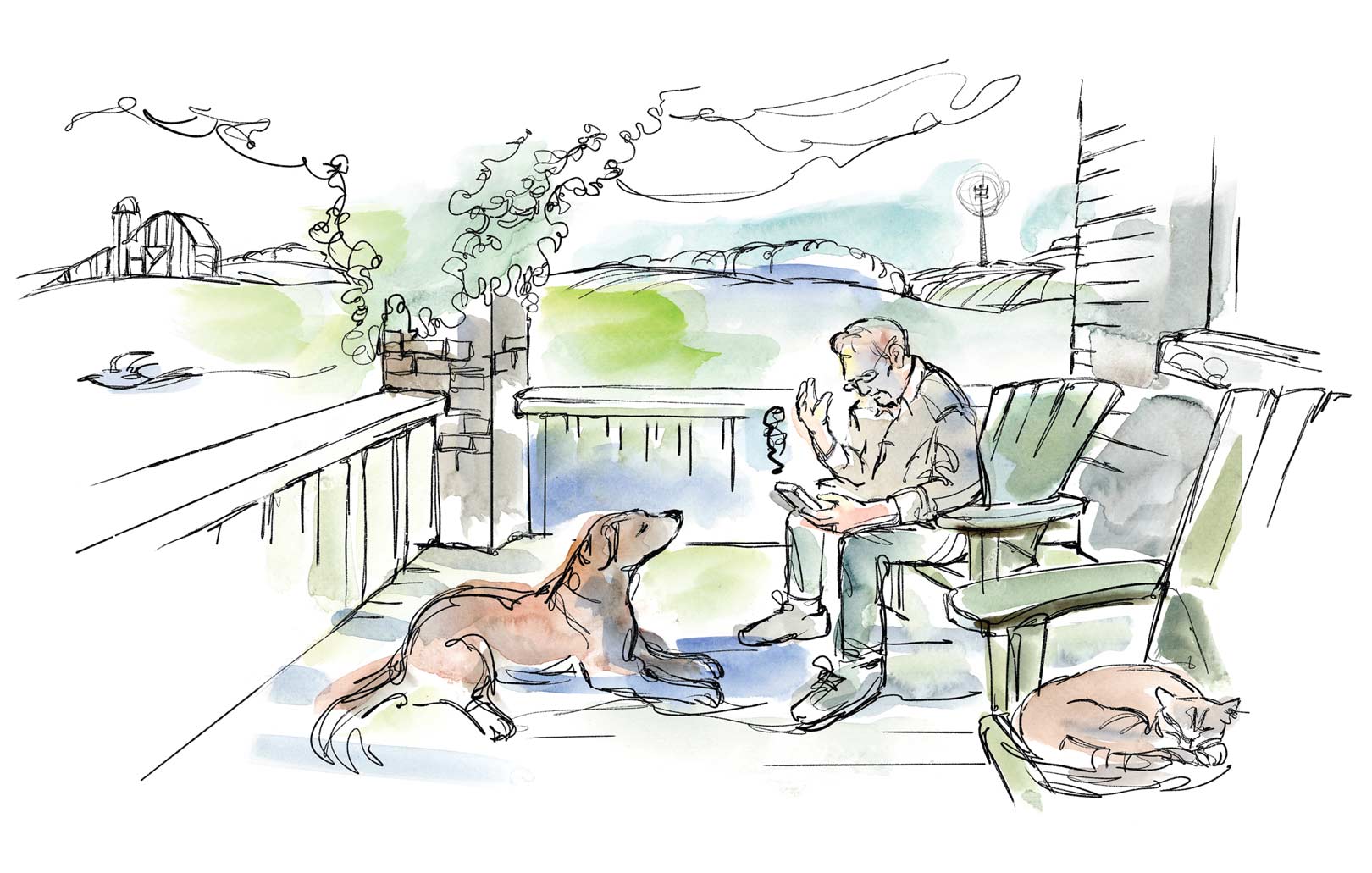
It’s the most common phrase we hear on the phone these days: “I don’t know what happened… ” The line has disconnected for no apparent reason. So we call each other back and get busy signals until one or the other gives up. When we finally reconnect, one person says, “I don’t know what happened,” and the conversation picks up where it left off.
The problem is infrastructure, of course. In the case of landlines, the infrastructure is ancient and Bell can’t afford to replace it. In the case of cell phones, the infrastructure still can’t cope with the concept of a hill. Villagers in a valley hang onto their landlines out of necessity because cell coverage doesn’t extend to them reliably. The larger problem is radio waves still don’t mix comfortably with digital bits and binary fragments, especially in rural areas, a fact which fits with my view of the universe. The countryside has always been hostile to newfangled ideas coming out of the city. We’re still not sure about the internal combustion engine.
We lost our internet for more than three weeks this spring. In ancient times, when an appliance stopped working, its lights would go out. Today, if the internet goes out, the lights on the modem stay on, they just don’t flicker anymore. We still have our landline, something that allows us to keep in touch with immediate family during a power outage. (The rest of the time it keeps us in touch with scammers.) But hanging onto obsolete technology isn’t always a good idea. Last year my old fax machine, which had sat unused under my desk for the better part of a decade, suddenly jolted awake and called for help in the middle of the night. The police banged on my door at 3:00 in the morning to tell me someone had called 911 from my fax number. I had to show them the machine to prove it was unharmed. We all shrugged and said, “I don’t know what happened.” The officers left and I went back to bed. The next day I threw the fax machine into the trash and cut the fax line off at the panel.
A nice lady in the Philippines who eventually answered my call told me she thought our internet problem was because I needed a new modem. But the repairman in the white van who showed up a week later said no, it was a problem in the cell tower which sits on a sideroad about two miles distant, over a hill. “It’s bouncing back and forth between 4G and 5G, and your system can’t handle 5G,” he said, quite confident I knew what on earth he was talking about. He returned later that day to report he had “placed a ban on 5G” in that tower, an action I thought would have required some consultation with the federal cabinet or at minimum someone with a desk. But he promised me the problem had been solved. He left and about an hour later the modem froze again, and the outside world parted company with us once more. A couple of days later, another nice lady in the Philippines apologized for the lengthy disruption and said she was “escalating” my case and a new modem would arrive in the mail in the next three to five business days.
By this time, my sons had left the house to spend more time at their girlfriends’ houses in town where there’s fibre optic cables. My wife and I had long since togged up in gloves and boots and lapsed back into the analog world of the farm. The weather had turned balmy, so we walked and gardened and burned brush piles without a permit. Then we drove down country to a Fur and Feather show to find interesting new chickens. We missed several weeks of Trump trials, federal budget outrage, inaccurate storm warnings, and all the seasonal scares about ticks, bird flu and hammerhead worms. We had a very pleasant spring.
Finally, the new modem arrived in the hands of Rob, our postman. I took it into the office and found to my astonishment that the old modem had suddenly come back to life, flickering away and unloading weeks’ worth of news about Taylor Swift’s crop tops. I shrugged, pulled its plug and hooked up the new one. It worked too, and has been burbling away ever since.
I still haven’t the faintest idea what happened.
Story by:
Dan Needles
Photography by:
Shelagh Armstrong




